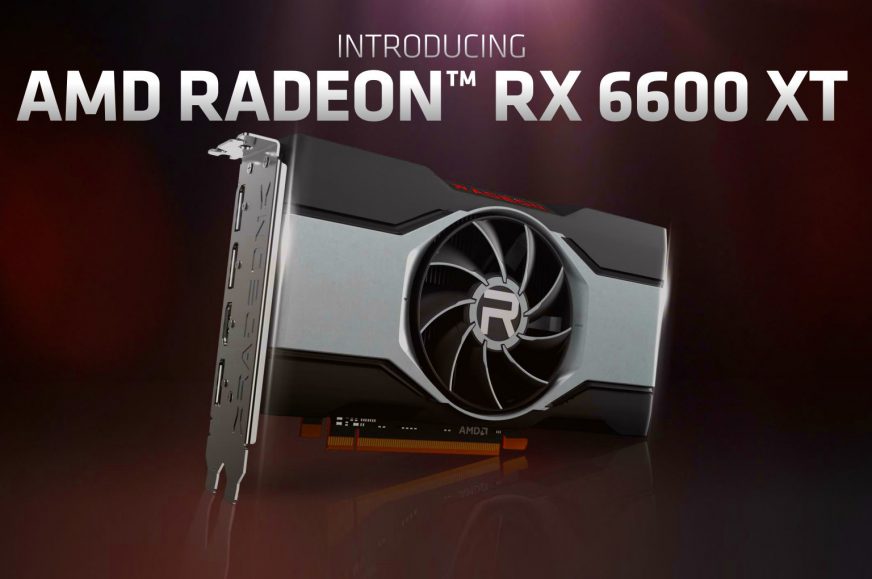Navi 23 and Radeon RX 6600 XT
Reports that AMD was to unveil a new and so far the cheapest graphics card with RDNA 2 architecture on Friday turned out to be true and AMD has announced Radeon RX 6600 XT. Full specifications has been revealed, but with a price a bit higher than what has been leaked. The card using the new Navi 23 GPU should offer higher performance and a slightly lower power draw than Nvidia’s GeForce RTX 3060, but for a price 15% higher.
The Radeon RX 6600 XT is based on the third GPU in the RDNA 2 family, codenamed Navi 23. It is already featured in the Radeon Pro W6600 and the mobile Radeon RX 6600M. We know that it contains 11.06 billion transistors, is again manufactured on a 7nm TSMC process node (N7) and measures 237 mm².
The Radeon RX 6600 XT is the first graphics card that actually uses the full-featured version of the chip, with all 32 CUs active, i.e. 2048 shaders and 32 Ray Accelerators (specialized units for ray-tracing graphics, analogous to Nvidia’s RT cores). The GPU contains 64 ROPs and a 128-bit memory bus, but as with the higher GPUs of the RDNA 2 architecture, the memory subsystem’s performance is also assisted by Infinity Cache, which allows you to achieve the same gaming performance with a narrower bus and memory bandwidth, so the graphics card should perform better than what you would expect from the 128-bit bus.
However, Infinity Cache is only 32 MB in Navi 23, so it will no longer be as effective at higher resolutions. According to paper specifications, the Radeon RX 6600 XT should have about 78% of the theoretical raw performance compared to the Radeon RX 6700 XT, but only two-thirds of its memory bandwidth and only one-third of Infinity Cache capacity. Radeon RX 6600 XT is therefore designed mainly for FullHD resolution.
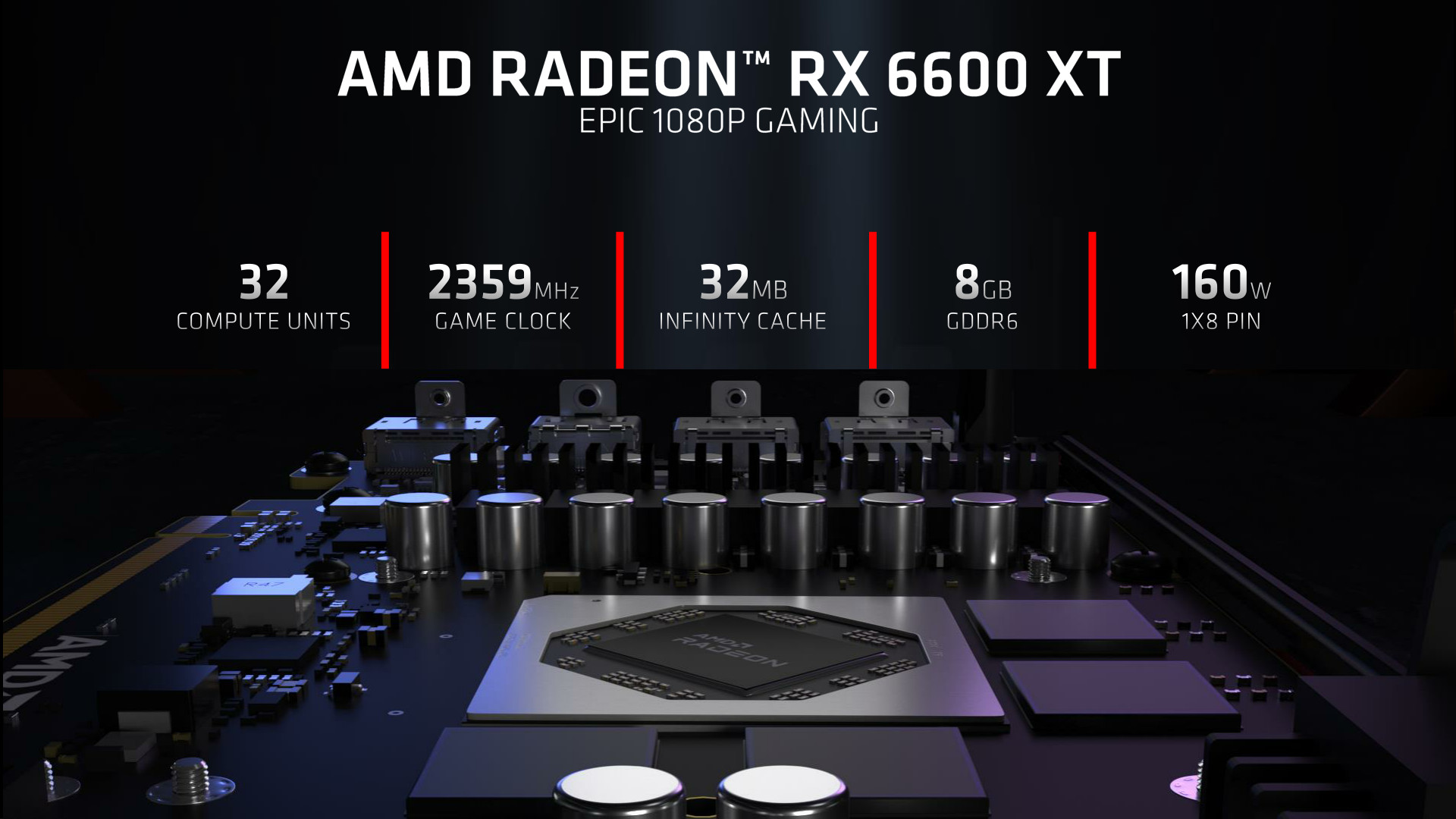
The GPU frequencies are as follows: the base clock is 1968 MHz, the “Game Clock” or typical clock in games is 2359 MHz, and the boost is 2589 MHz. At these clock levels, the GPU should reach a theoretical mathematical performance of 9.7 TFLOPS in FP32 calculations (and twice that in FP16). The clock is lower than with the Radeon Pro W6600. The reason could be that AMD may be advertising the absolute theoretical maximum frequency for Pro cards, while for the gaming models the graphics cards usually boost even above the advertised maximums, which is stated relatively conservatively in the specifications.
The card has 8 GB of GDDR6 memory at 16.0 GHz effective clock, giving it 256 GB/s bandwidth (just like the Radeon RX 580 years ago). But as mentioned, the use of Infinity Cache will result increases performance. The TDP of the whole graphics card is 160 W, i.e. about 70% of the consumption of the Radeon RX 6700 XT. External power is provided by a single 8-pin. The competing Nvidia GeForce RTX 3060 has a 10 W higher power consumption (170 W TDP). Of course, models with factory overclocking may have these values increased.
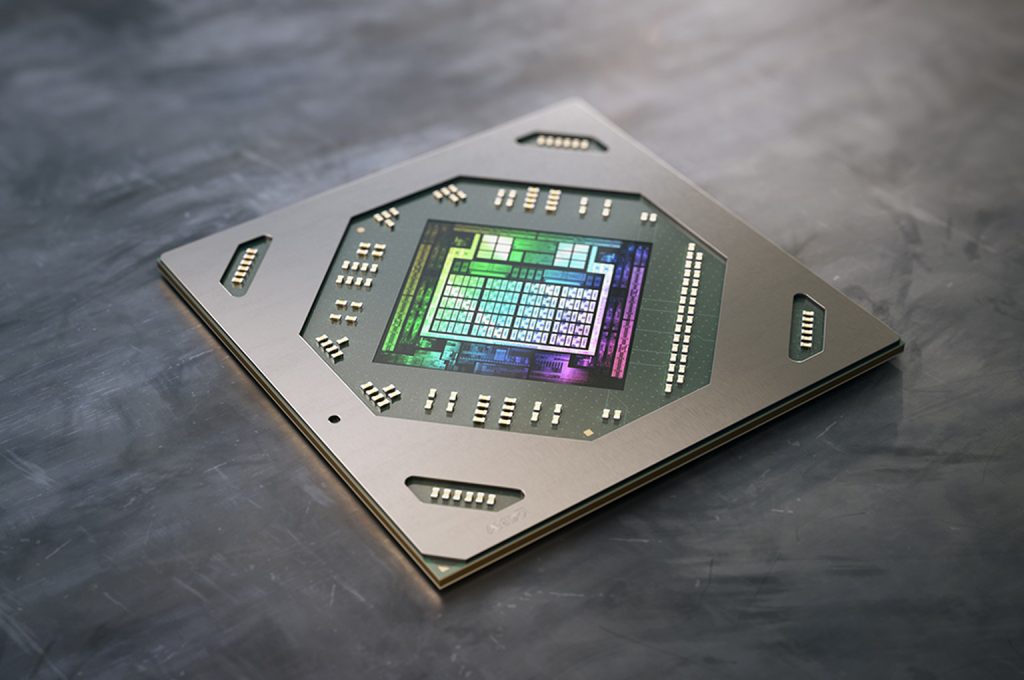
It has not yet been confirmed whether the chip supports full PCI Express 4.0 ×16 connectivity (or is limited to ×8). According to the specifications on the AMD website, the graphics card should support the same video outputs as the previous RX 6000 models, i.e. DisplayPort 1.4 including DSC (compression), HDMI 2.1 and variable refresh rate support, but RX 6600 XT cards are no longer expected to have USB-C output. It is confirmed that the GPU supports AV1 format video decoding.
Performance higher than RTX 3060, but the price too ($ 379)
The card will actually be sold on 11 August in non-reference versions. The reference design with one fan, which you can see on promotional materials, will not actually be produced. The cards available in retail will come with different, usually dual and triple-fan non-reference coolers.
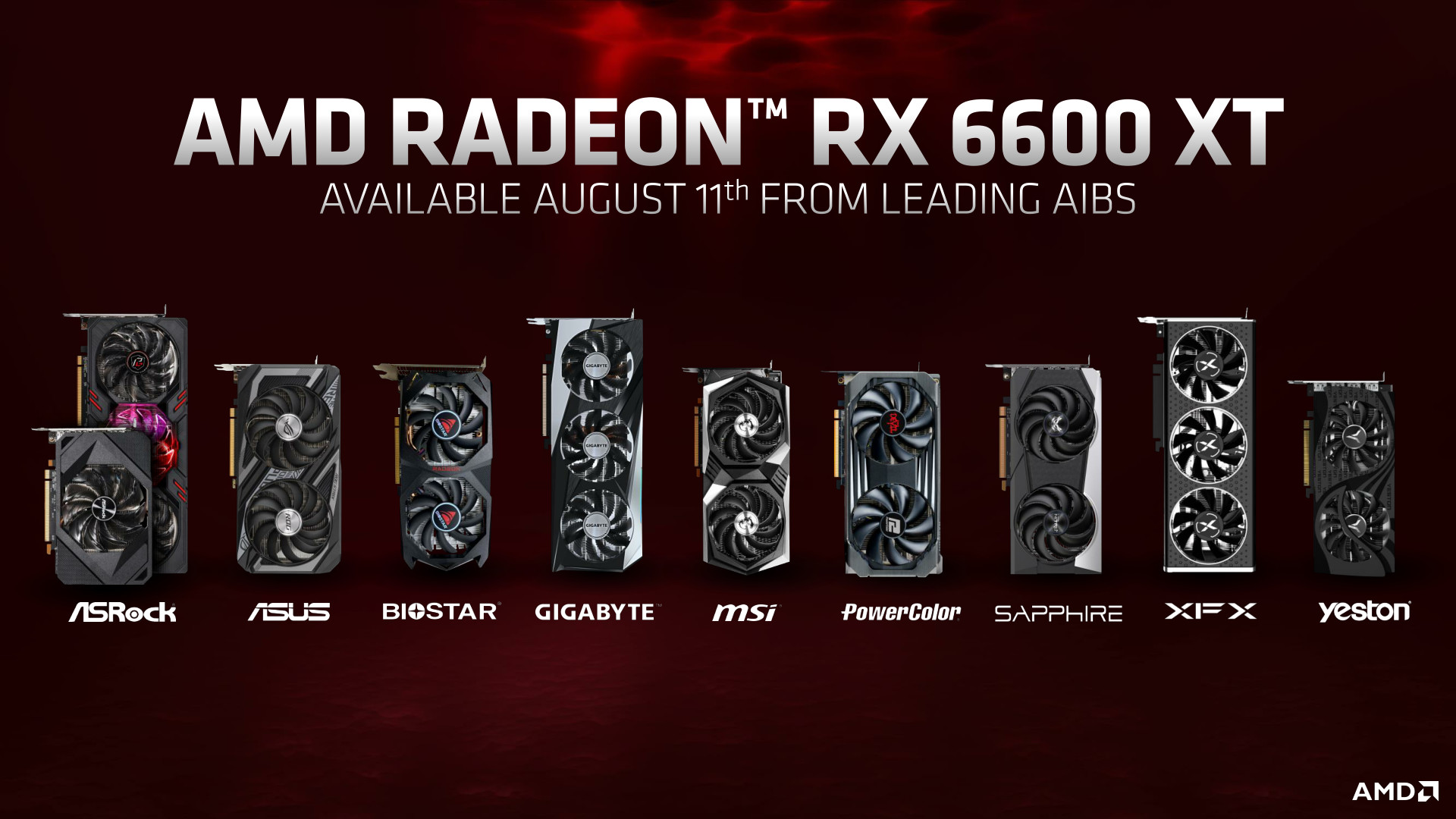
According to AMD, the Radeon RX 6600 XT is offers higher performance than the GeForce RTX 3060. Reportedly it’s up to 15% faster, but it’s quite possible AMD bases this on games that favor its card better. The performance should supposedly match the higher price the card has—the Radeon RX 6600 XT officially costs $ 379. This sum is also about 15% higher price than the recommended price of the RTX 3060, but the card probably won’t be faster in games with ray-tracing effects, where the RTX 3060 might instead have an advantage. Also in this case, the Nvidia card has 50% more memory (even more than its higher-tier RTX 3070 and RTX 3080 models).
Our European price, inclusive of 21% VAT, should now be roughly € 387. But that is, of course, only the recommended price. So far, there is still a shortage of all high performance GPUs on the market, so distributors/retailers (and quite likely also manufacturers and AMD) might charge more for the cards, and we will be waiting for this recommended price to become real for some months. It is said that a relatively large number of these graphics cards should be delivered into the supply chain for the launch, but just about any number would not be enough to satisfy the demand in today’s conditions.
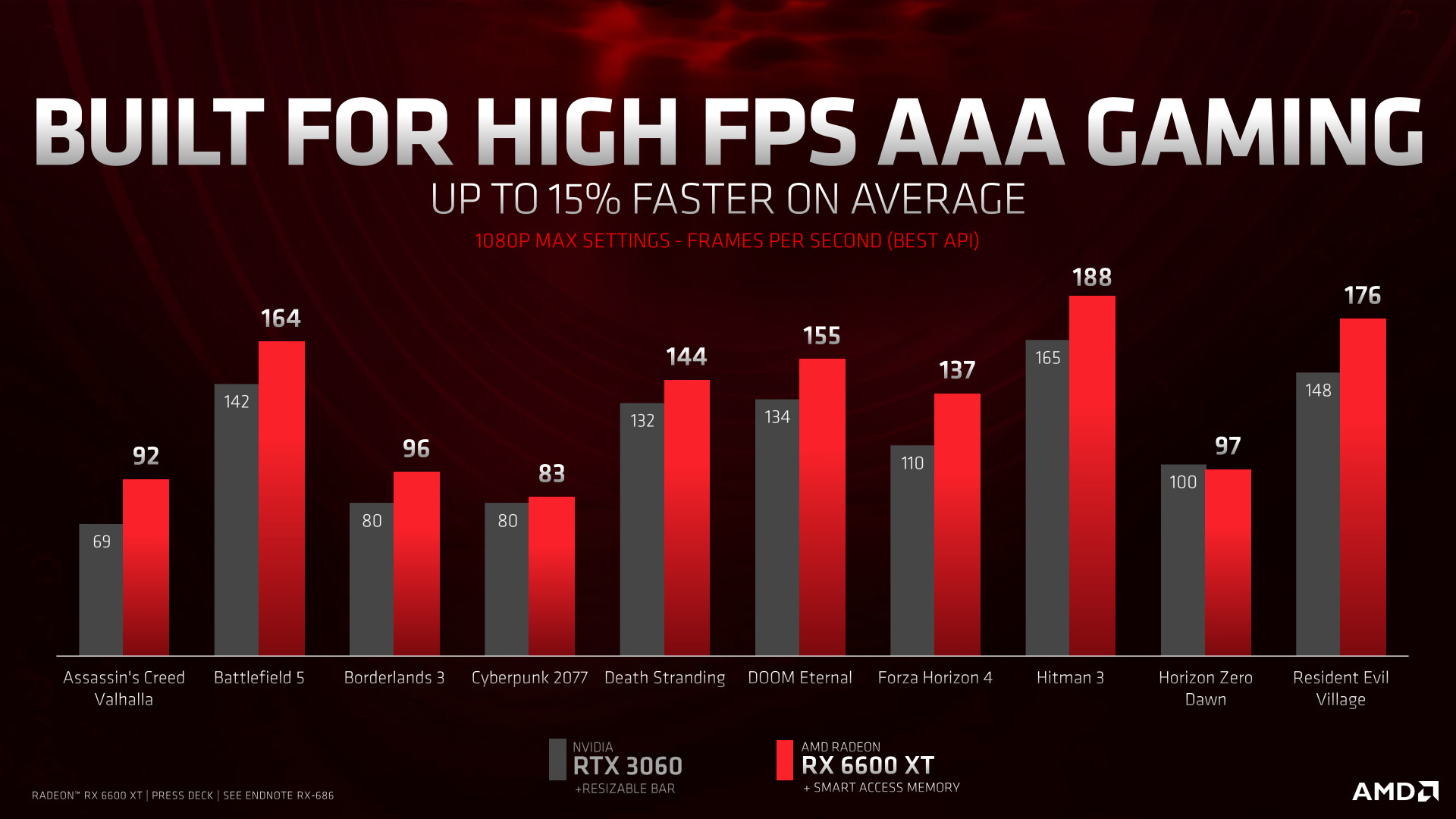
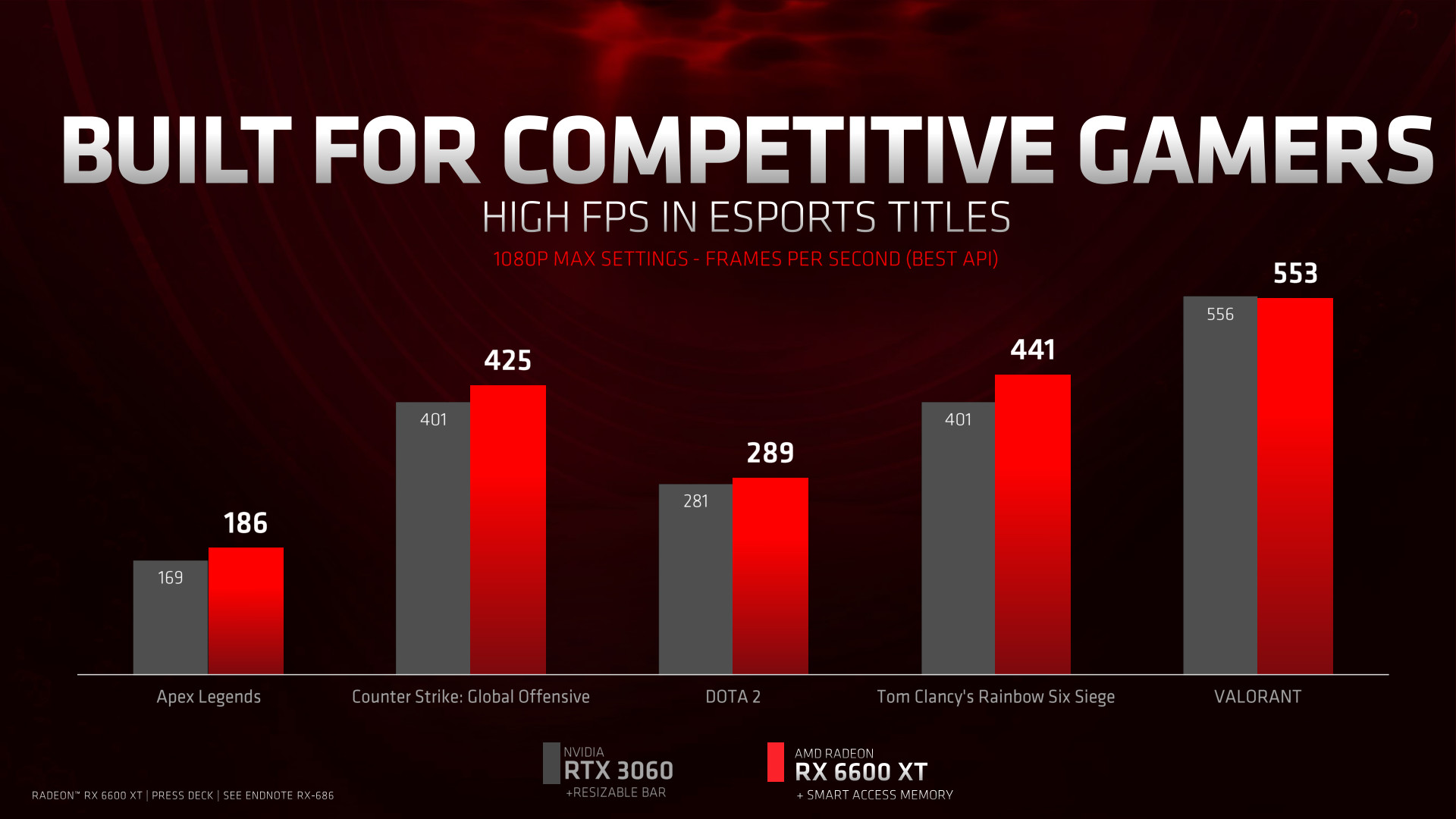
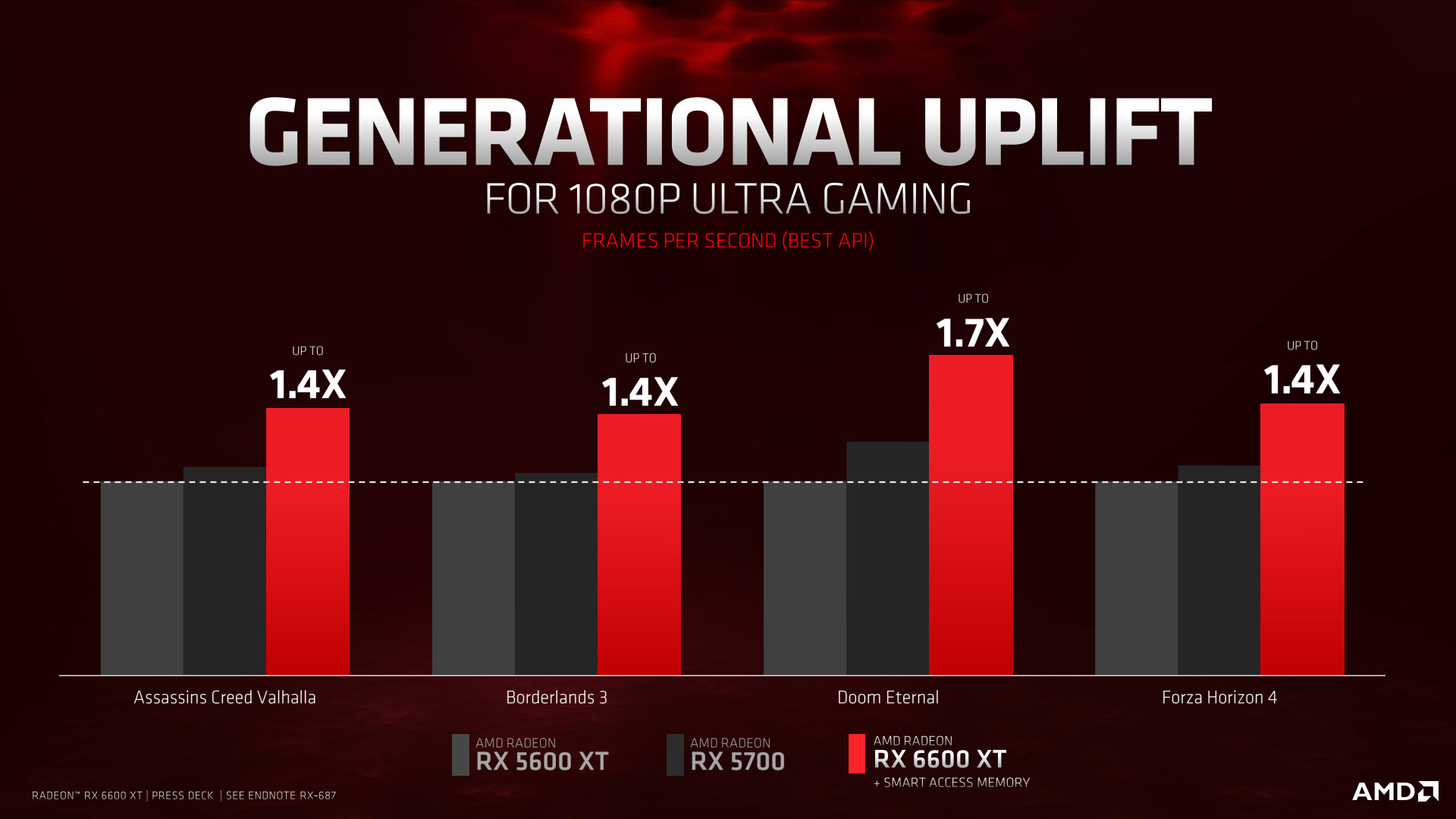

Radeon RX 6600 not yet revealed
In addition to the RX 6600 XT, the Radeon RX 6600 SKU should appear later, which should have the same GPU limited to 1792 shaders/28 CU, while the memory will remain at 8 GB. Power consumption and price should be lower, but we do not know by how much. According to unconfirmed rumors, perhaps the Radeon RX 6600 should go on sale in September, but the it’s official unveiling could probably happen already in August.
Sources: AMD (1, 2), AnandTech
Translated, original text by:
Jan Olšan, editor for Cnews.cz
- Contents
- Navi 23 and Radeon RX 6600 XT





